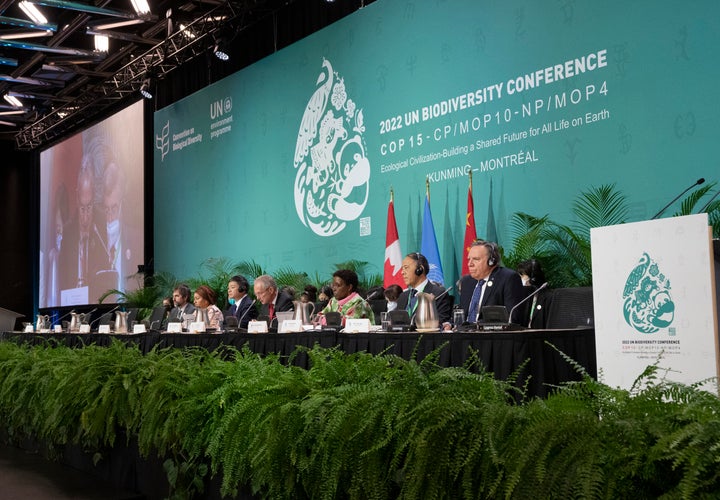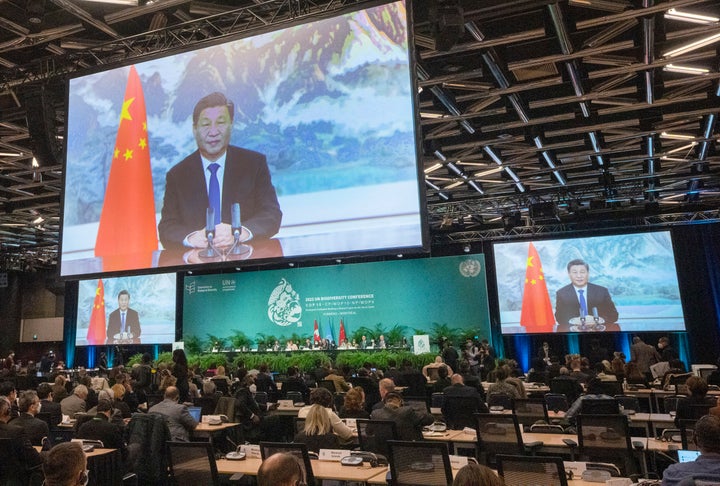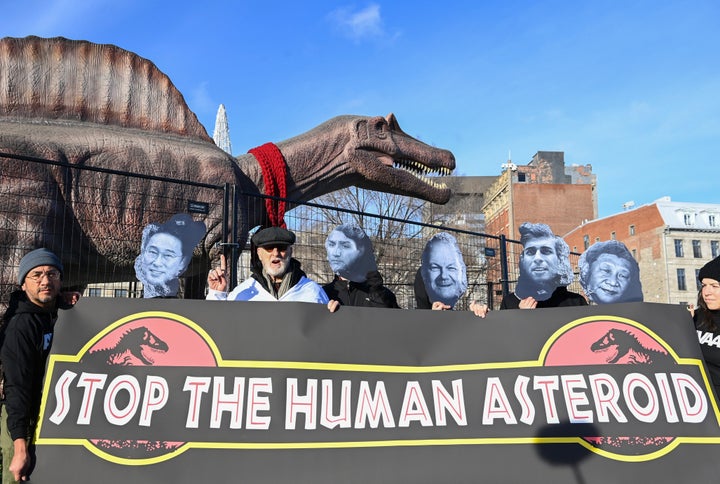Negotiators at a United Nations biodiversity conference Saturday have still not resolved most of the key issues around protecting the world’s nature by 2030 and providing tens of billions of dollars to developing countries to fund those efforts.
The United Nations Biodiversity Conference, or COP15, is set to wrap up Monday in Montreal and delegates were racing to agree on language in a framework that calls for protecting 30% of global land and marine areas by 2030, a goal known as “30 by 30.” Currently, 17% of terrestrial and 10% of marine areas globally are protected.
They also have to settle on amounts of funding that would go to financing projects to create protected areas and restore marine and other ecosystems. Early draft frameworks called for closing a $700 billion gap in financing by 2030. Most of that would come from reforming subsidies in the agriculture, fisheries and energy sectors but there are also calls for tens of billions of dollars in new funding that would flow from rich to poor nations.
“From the beginning of the negotiations, we’ve been seeing systematically some countries weakening the ambition. The ambition needs to come back,” Marco Lambertini, the director general of WWF International said, adding that they needed a “clear conservation target” that “sets the world on a clear trajectory towards delivering a nature positive future.”

Canada’s Minister of Environment and Climate Change Steven Guilbeault expressed more optimism. Guilbeault told The Associated Press Saturday morning that he has heard “few people talk about red lines” and that means “people are willing to talk. People are willing to negotiate.”
“I’ve heard a lot of support for ambition from all corners of the world,” Guilbeault said. “Everyone wants to leave here with an ambitious agreement.”
Elizabeth Maruma Mrema, the executive secretary of the U.N. Convention on Biological Diversity, told reporters Saturday afternoon that she was encouraged by the progress especially around committing resources but that a deal had not been reached yet.
“The negotiating teams have more work to do. They have to turn promises made into plans, ambitions and actions,” she said.
The ministers and government officials from about 190 countries mostly agree that protecting biodiversity has to be a priority, with many comparing those efforts to climate talks that wrapped up last month in Egypt.
Climate change coupled with habitat loss, pollution and development have hammered the world’s biodiversity, with one estimate in 2019 warning that a million plant and animal species face extinction within decades — a rate of loss 1,000 times greater than expected. Humans use about 50,000 wild species routinely, and 1 out of 5 people of the world’s 8 billion population depend on those species for food and income, the report said.
But they are struggling to agree on what that protection looks like and who will pay for it.

The financing has been among the most contentions issues, with delegates from 70 African, South American and Asian countries walking out of negotiations Wednesday. They returned several hours later.
Brazil, speaking for developing countries, said in a statement that a new funding mechanism dedicated to biodiversity be established and that developed countries provide $100 billion annually in financial grants to emerging economies until 2030.
“You need a robust and ambitious package on finance that matches the ambition of the Global Biodiversity framework,” Leonardo Cleaver de Athayde, the head of the Brazilian delegation, told the AP.
“This will cost a lot of money to implement. The targets are extremely ambitious and cost a lot of money,” he continued. “The developing countries will bear a higher burden in implementing it because most biodiversity resources are to be found in developing countries. They need international support.”
The donor countries — the European Union and 13 countries — responded Friday with a statement promising to increase biodiversity financing. They noted they doubled biodiversity spending from 2010 to 2015 and committed to several billion dollars more in biodiversity funding since then.
Zac Goldsmith, the U.K.’s minister for Overseas Territories, Commonwealth, Energy, Climate and Environment, acknowledged the focus cannot only be on popular protection measures like the 30 by 30 goal.

“The 30-by-30 is a headline target, but you can’t deliver 30-by-30 without a whole range of other things being agreed as well,” he said. “We’re not gonna have 30-by-30 without finance. We’re not going to have it unless other countries do as Costa Rica has and break the link between agricultural productivity and land degradation and deforestation. And we’re not gonna be able to do any of these things if we don’t address … subsidies.”
Even protection targets are still being squabbled over. Many countries believe 30% is an admirable goal but some countries are pushing to water the language down to allow among other things sustainable activities in those areas that conservationists fear could result in destructive logging and mining. Others want language referencing ways to better manage the other 70% of the world that wouldn’t be protected.
Other disagreements revolve around how best to share the benefits from genetic resources and enshrining the rights of Indigenous groups in any agreement. Some Indigenous groups want direct access to funding and a voice in designating protected areas that impact Indigenous peoples.
“Any protected areas that affect Indigenous peoples need to have the free prior informed consent of Indigenous peoples, otherwise there will be the same old patters of Indigenous peoples being displaced by protected areas,” Atossa Soltani, the director of global strategy for the Amazon Sacred Headwaters Initiative, an alliance of 30 Indigenous nations in Ecuador and Peru working to working to permanently protect 86 million acres of rainforest, said in an email interview.
The other challenge is including language — similar to the Paris Agreement on climate change — that creates a stronger system to report and verify the progress countries make. Many point to the failures of the 2010 biodiversity framework, which saw only six of the 20 targets partially met by a 2020 deadline.
“It’s very important for parties to see what others are doing. It’s important for civil society, people like you to track our progress or sometimes unfortunately lack thereof,” Guilbeault said. “It’s an important tool to help keep our feet to the fire. If it’s effective on climate. We should have it on nature as well.”

























































